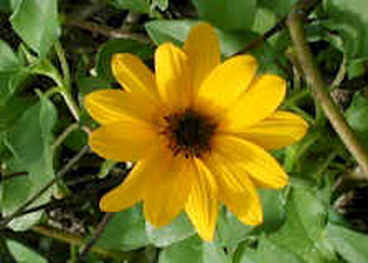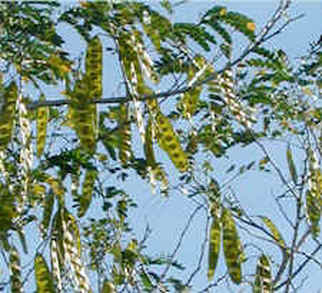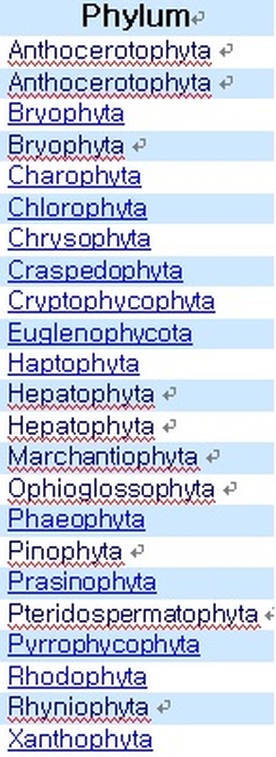Kingdom Plantae- Body Type: multicellular with cell walls made of cellulose
- Eukaryotic - Food consumption in done through photosynthesis (light absorption) - Converts absorbed sunlight to glucose - Reproduces through both sexual and asexual methods - Autotrophic - Plants have organs and organ systems - Leaves have a waxy coat on them to shield against water - Roots provides support and absorbs water - Stem provides support for flower and leaves - Petal / Flower / Bud is the reproductive organ of the plant - Kingdom Plantae differentiates with other Kingdoms because it has cell walls made up of cllulose that supports the plant. Cell wall is not a semi-permeable membrane and the cell can't transport material and nutrients in and out of the cell walls. - Large central vacuole stores water and chemicals for use inside the cell which solves the problem of incapability to transport materials and nutrients in and out of the cell walls. - Chloroplasts are another organelle that differentiates Kingdom Plantae with other Kingdoms. It is responsible of converting light energy into sugar. |
Example of Kingdom Plantae - Helianthus debilis

Species Name: Helianthus debilis
Common Name: Beach sunflower, cucumberleaf sunflower
Kingdom: Plantae
Phylum: Magnoliophyta
Class: Magnoliopsida
Order: Asterales
Family: Asteraceae
Genus: Helianthus
Other Taxonomic Groupings:
Subkingdom : Tracheobionta
Subclass: Asteridae
Common Name: Beach sunflower, cucumberleaf sunflower
Kingdom: Plantae
Phylum: Magnoliophyta
Class: Magnoliopsida
Order: Asterales
Family: Asteraceae
Genus: Helianthus
Other Taxonomic Groupings:
Subkingdom : Tracheobionta
Subclass: Asteridae
Example of Kingdom Plantae - Acanthophora spicifera

Species Name: Acanthophora spicifera
Common Name: Spiny seaweed
Kingdom: Plantae
Phylum: Rhodophyta
Class: Rhodophyceae
Order: Ceramiales
Family: Rhodomelacedae
Genus: Acanthophora
Example of Kingdom Plantae - Albizia julibrissa

Species Name: Albizia julibrissa
Common Name: Mimosa tree, powderpuff tree, silk tree
Kingdom: Plantae
Phylum: Tracheophyta
Class: Magnoliopsida
Order: Fabales
Family: Fabaceae
Genus: Albizia
Other Taxonomic Groupings:
Subkingdom: Tracheobionta
Division: Magnoliophyta
Subclass: Rosidae
Common Name: Mimosa tree, powderpuff tree, silk tree
Kingdom: Plantae
Phylum: Tracheophyta
Class: Magnoliopsida
Order: Fabales
Family: Fabaceae
Genus: Albizia
Other Taxonomic Groupings:
Subkingdom: Tracheobionta
Division: Magnoliophyta
Subclass: Rosidae
Summary of K.Plantae

Characteristics of Plantae Kingdom
- Eukaryote
- Multicellular
- Autotrophic
- Mostly Terrestrial
- Asexual and Sexual
- Nonmotile
Example: mosses, ferns, conifers, and flowering plants

